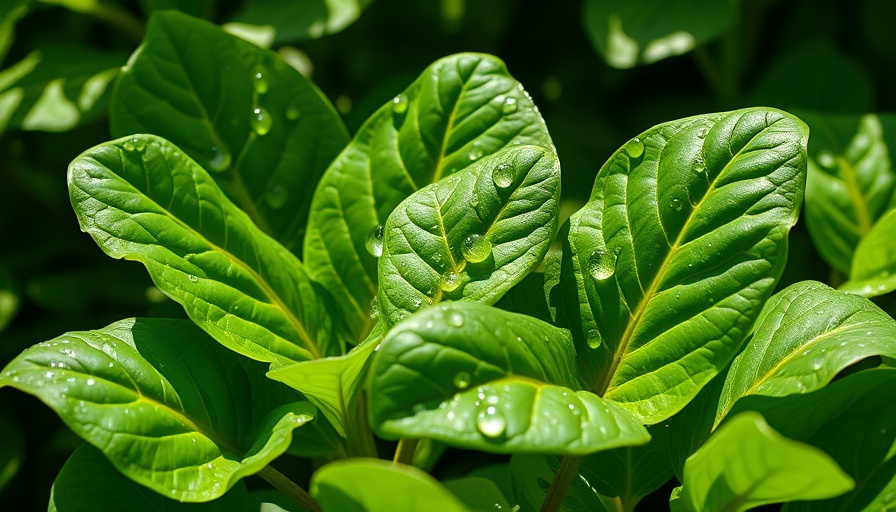
Transform Your Summer Garden with Malabar Spinach
As the heat settles in, a new contender takes center stage in the garden: Malabar spinach. Unlike traditional spinach which wilts under warm temperatures, Basella alba, commonly known as Malabar spinach, thrives in the heat, proving to be a reliable and delicious alternative for the summer months.
Rich Nutritional Benefits
Malabar spinach isn’t just beautiful; it's also nutritious! Packed with vitamins A and C, iron, potassium, and several antioxidants, this leafy green can offer valuable health benefits. Its rich, succulent leaves are a versatile addition to your meals, whether enjoyed fresh in salads, sautéed, or added to soups, making it a valuable plant in your vegetable gardening endeavors.
A Plant with Cultural Heritage
Originating from regions of the Indian subcontinent, Southeast Asia, and beyond, Malabar spinach brings a slice of tradition to your garden. Its high adaptability enables it to flourish in various climates, from tropical Africa to South America. Understanding its cultural significance and versatility can enhance your garden design, offering not only a food source but also a beautiful ornamental vine to grace your outdoor spaces.
Practical Tips for Growing Malabar Spinach
Starting your journey with Malabar spinach is easy. Begin by sowing seeds directly into well-draining soil enriched with organic matter. Whether you’re planting in raised garden beds or containers, ensure a sunny or partially shaded location. This fast-growing plant, reaching heights of up to 30 feet, thrives on trellises, making it an excellent choice for vertical gardening.
Pest Prevention and Garden Harmony
As with any gardening project, garden pests can pose a threat to your Malabar spinach's success. Keep an eye out for common garden insects such as aphids and spider mites. Implementing organic gardening methods, like introducing beneficial insects or using neem oil, can effectively control these pests without harming the ecosystem. Prioritize garden pest control for a flourishing vegetable garden.
Harvesting Your Malabar Spinach
After about 60 to 85 days of growth, your patience will pay off! Harvest the leaves persistently to encourage further growth - gathering a bountiful yield of this lovely green. Whether you're planning a fresh garden salad or cooking them into your favorite recipes, your homegrown Malabar spinach will be a nutritious delight.
Join the Gardening Community
As you explore the joys of gardening with Malabar spinach, consider connecting with local gardening communities. From sharing tips and tricks to exchanging seeds, engaging with fellow gardeners can turn your gardening project into an enriching experience. Check online forums or local gardening clubs for inspiration!
Final Thoughts and Action Steps
Taking charge of your garden and integrating Malabar spinach into your planting regimen is not only rewarding for your health but also contributes to a sustainable lifestyle. Embrace the summer heat with this durable leafy green and share your experiences and recipes with others.
 Add Row
Add Row  Add
Add 




Write A Comment